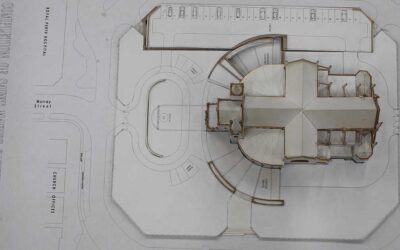Description of Electronic Records

Margot Note
One of the most persistent issues, as long as electronic records have existed, is whether traditional archival principles apply.
Some have argued that they do, and archivists should treat electronic records as just another format, like maps, photographs, or audiovisual materials. Others state that the nature of how electronic records are created and managed means that archivists need a new set of rules, practices, and procedures to describe them.
One issue regarding digital records is the mutability of their information. With analog materials, it is easier to tell if changes have been made with and to verify specific versions. It is difficult, if not impossible, to do so with digital materials. Authenticity and reliability are essential to archival appraisal, which carries over into access. Electronic records also have dependencies on hardware and software, as well as issues of the fragility of the media they are recorded on.
There is a pressing need to describe electronic records because of the machine dependency of data, and electronic systems’ complexity. A lack of inherent arrangement underlies description. There is also the need to incorporate life cycle information into description to establish the nature of records, the timing of their creation, and data authenticity.
Description Challenges
Electronic records present several problems regarding traditional description. The first is timing. Most archives develop descriptive language and write finding aids after archivists have accessioned and arranged the records. The stages of the life cycle of records are creation, distribution and use, storage and maintenance, retention and disposition, and archival preservation. Archivists tend to get involved at the very end of the life cycle. Electronic records dictate earlier involvement; delay means crucial information is often irretrievably lost.
Another challenge is the custody of records of enduring value. Archivists tend to describe the records they have in their possession. Electronic records have different models: custodial and noncustodial. Archives may describe records scheduled to come to the archives at some point or records that might remain with the creating agency. A significant decision archivists need to make is what to capture rather than necessarily what to keep.
Traditional description focuses on physicality. Archivists tend to describe physical units, such as boxes, folders, and volumes, leading to the container list that’s typically part of a finding aid, which does not exist with electronic records. Electronic data is stored randomly, so that structure and content are not bound together.
A shift in the emphasis of the description also exists. The description of electronic records tends to emphasize the system level and not the series. However, there is also a shift in terms of provenance and content. There is a greater tendency to focus on provenance: where records come from recordkeeping evidence and often proof of authenticity. There is less of an emphasis on content.
Metadata and Description
Archivists must have sufficient data to know that a record exists and identify it, locate it, and determine the conditions under which researchers can use it. Once found, the user needs enough information to access the record, to retrieve the information, and to understand the context of its creation. The user needs information to interpret the content. Sometimes this information can be abstract, assume levels of knowledge, or be based on codes. Description must provide information to verify authenticity and to support the records. Information about a record captured at the system’s creation provides information, but it may not include provenance or sufficient context for an archival perspective.
Professional literature focuses on the role of metadata in description of electronic records. Some argue that all archival description is metadata. Does the existence and availability of metadata preclude the need for anything resembling traditional archival description? It is necessary at the item level to include digital materials online but leads to the conundrum of item level versus aggregate level description, an area that becomes exceedingly complex with electronic records.
Electronic records have unique characteristics, such as the need for supporting documentation to describe their contents and the convenience of editing, copying, erasure, and reformatting. The ease of manipulation, including the challenge of tracing these changes, acts as a double-edged sword. Description of electronic records will change over time, impacting traditional methods of description used for analog materials.

Margot Note
Margot Note, archivist, consultant, and Lucidea Press author is a regular blogger and popular webinar presenter for Lucidea, provider of ArchivEra, archival collections management software for today’s challenges and tomorrow’s opportunities. Read more of Margot’s posts here.
Similar Posts
Cultivating a Community of Archival Practice: A Client’s Success Story
“We need a dynamic system that supports a consistent approach to managing the Perth diocesan collections across Western Australia…ArchivEra is already providing this with Catholic dioceses in Bendigo, Hobart, and Ballarat.”
Honoring Cultural Protocols in Archival Practice
Learn how archives can honor Indigenous cultural protocols, reframe stewardship, and move toward ethical, reciprocal, and community-driven practices.
Centering Sovereignty in Archives: Decolonial Approaches to Indigenous Knowledge
Margot Note explores how centering sovereignty in archives supports Indigenous rights, decolonial practice, justice, and cultural resurgence.
The Ethical Use of Born-Digital Materials in Archives
Born-digital records introduce complex ethical dilemmas involving consent, privacy, preservation, and access. Archivists must rethink ethical frameworks to navigate digital records’ dynamic, fragmented, and often personal nature.




Leave a Comment
Comments are reviewed and must adhere to our comments policy.
0 Comments